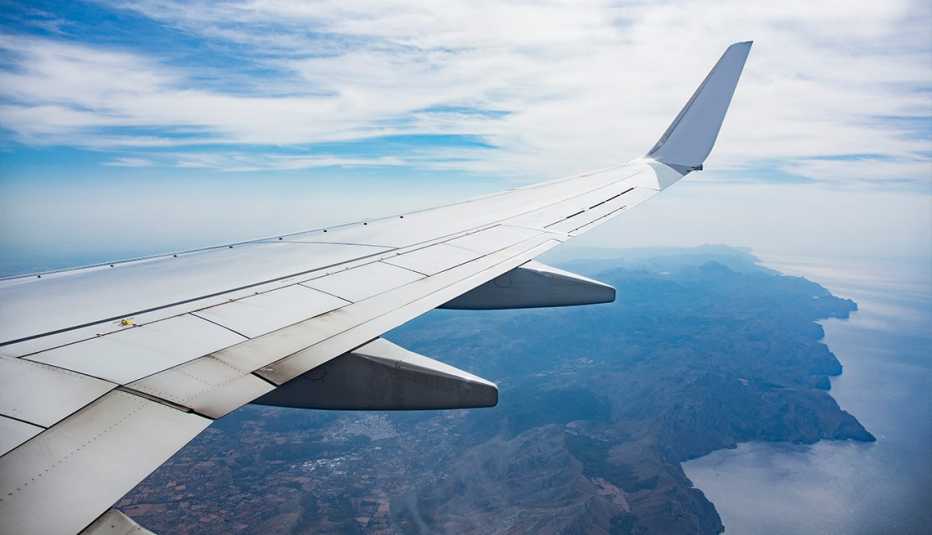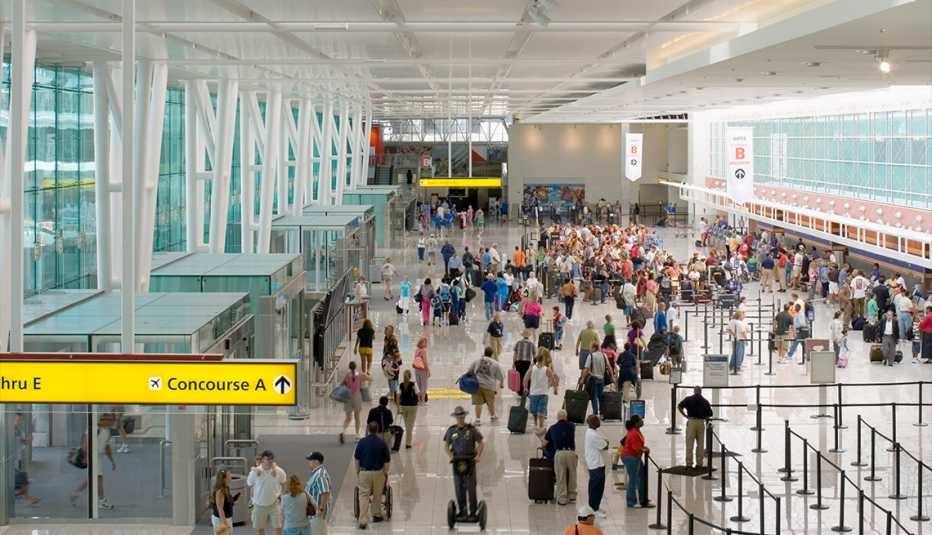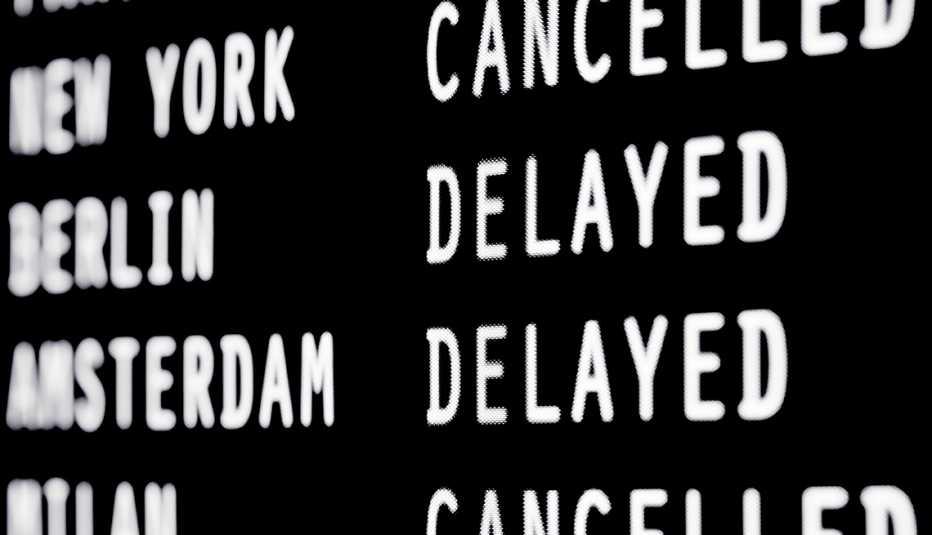AARP Hearing Center


Flying is notorious for its slew of stressors: long security lines, flight delays and unexpected turbulence, to name a few. But there are a handful of ways to ease the chaos of air travel, and no one knows those anxiety-reducing tricks better than frequent fliers.
We talked with aviation sources, cabin crew members, miles and points gurus, travel agents and travel bloggers to learn their hard-earned tips for improving the art of air travel. The result? This, our jam-packed AARP Smart Guide to Air Travel — a resource that promises to make the journey almost as good as the arrival.


BEFORE YOU GO
1. Snag a deal, cancel later
Don’t let great flight deals pass you by. Willis Orlando, of the membership airfare club Scott’s Cheap Flights, recommends scooping up a limited-time deal, then taking advantage of a lesser-known rule in U.S. air travel if the logistics don’t end up working. “Under federal law, you have a right to cancel your flight within 24 hours, with no penalty whatsoever,” he says. He recommends using this option “if you’re flying from the U.S., and you want to book something now and figure things out later.”
2. When to book trips
Urban legends abound when it comes to the best time to book trips. Naveen Dittakavi, founder and CEO of flight-deals resource Next Vacay, shared this advice: “For domestic trips, book your travel between one and four months out.” He added that if you book any closer than that, the flight might be sold out or overpriced. “With international trips, begin watching trends eight to nine months in advance, and plan to book your travel around seven to eight months before.” He also recommends flying between Tuesday and Thursday for prime deals.
3. Use flight-deal tools
For a monthly or yearly subscription, flight-deal services will do the work for you, scouring the internet for impressively cheap flights. But Dittakavi says sometimes even Google or Bing can get the job done — particularly with Google Flights. “It gives you a bird’s-eye view of the travel landscape, so it’s much easier to pick up trends and find those deals that’ll have you packing your bags almost quicker than you can book,” he says. “They also let you set alerts for specific flight routes you’re interested in.” These alerts notify you as soon as the price drops. Other similar sites include Skyscanner, Kayak, Momondo, FareFirst and InvisibleHand.
4. Book directly
It may be tempting to snag a flight through a third-party site, especially if it’s less expensive. But Dittakavi recommends booking directly with the airline. “There’s a chance the airline will go above and beyond for you if you book with them,” he says. “The problem with booking through sites like Expedia [Priceline, Hotwire or Booking.com] is that if you ever have a problem or challenge with the flight, you have to go through a third party to resolve [it] — whereas the airline is more likely to have a team to deal with the issue either in person or via a call service.”
5. The best days for free upgrades
Avoiding certain days and times — especially the early-morning business-traveler rush — can increase your odds of getting a free upgrade, Dittakavi says. “Choosing public holidays or flights in the middle of the night are your best option, as you’ll be able to avoid the business traveler rush,” he says. “Since these types of flights are usually full of families, you’ll have an even better chance of landing a free upgrade if you’re in a couple or flying solo.” Of course, these free upgrades are far from guaranteed; your chances will increase even more if you’re a frequent flier with a specific airline.
6. Try trip stacking
The pandemic’s intermittent closing and reopening of country borders introduced a new air-travel trend: trip stacking. “Trip stacking is a strategy where a traveler will book multiple trips — at least two or more at the same time — to allow for vacation options in case a new pandemic-related restriction or border shutdown leads to a cancellation of one of the trips in the pipeline,” says luxury travel adviser Sandy Pappas, noting that travelers often opt for stacking one domestic and one international trip. “The U.S. tends to have very flexible cancellation policies, so it’s less anxiety-inducing for a traveler to know they have the option to cancel a domestic trip.”
7. Try carbon offsetting
To make jet-setting a bit more sustainable, some travelers have turned to carbon offsetting, in which fliers invest in eco initiatives like tree planting to help offset the emissions from their flights. It’s hardly a fix for the fossil-fuel-dependent industry, but it’s better than nothing, says Susanne Etti, an environmental impact specialist for Intrepid Travel. Here’s how to start: “Carbon footprint calculators help to determine the number of emissions one should be offsetting,” Etti says, noting that the calculator on CarbonFootprint.com is a good option. “Once you have the number, look for programs that help to offset. Some of the main ones [can be found at] Carbonfund.org and Treepoints.green.”
8. More eco-friendly travel ideas
Carbon offsetting is one increasingly popular option for the sustainability-minded crowd, but Etti says it’s far from the only — or even best — way to travel green. She recommends road trips or train travel when possible. When you do have to fly, minimize stopovers and follow a lesser-known piece of sustainable travel advice: Pack light. “Weight has an impact on emissions,” Etti says. “Fuel consumption goes up with the weight of an aircraft.”
9. Banish germs
To try to avoid falling ill, pack these items on your carry-on for quick access: wipes containing at least 60 percent alcohol, travel-size botanical charcoal soap, touch screen–sensitive gloves, a medical face mask and an airplane-tray cover.





































































More AARP Smart Guides
How to Find the Best Vacation Rental
28 tips on planning — and enjoying — time away from home
Travel Alone With Confidence
Discover how to take a successful trip by yourself
Get Road-Trip Ready
We'll help you have a driving adventure to remember